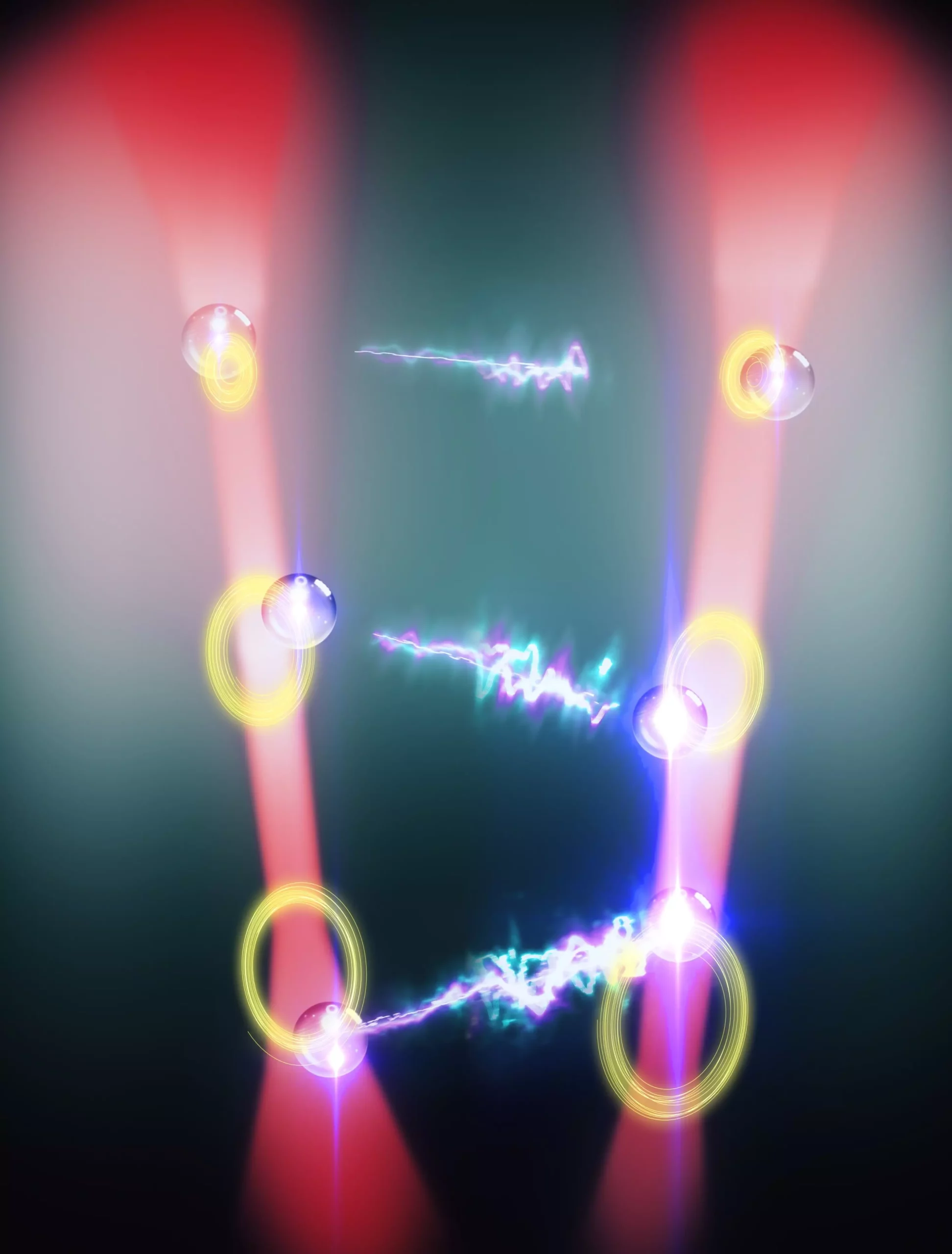In the realm of modern physics, the marriage of classical concepts with innovative experimental techniques has given rise to remarkable discoveries. A breakthrough study, recently published in *Nature Physics*, delves into the intricate behaviors of two optically-trapped glass nanoparticles. Researchers have uncovered what they describe as novel collective non-Hermitian and non-linear dynamics spurred by non-reciprocal interactions. This finding significantly enhances our understanding of optical levitation and opens exciting new avenues for research and application.
At its core, traditional interaction forces—such as gravity and electromagnetism—are reciprocal; they adhere to a fundamental symmetry, either attracting or repelling two entities involved. However, nature is rich in complexity, and certain interactions challenge this reciprocity. For example, the dynamics between predator and prey exhibit an inherent asymmetry: the predator seeks to capture the prey, while the prey desperately attempts to evade. This nuanced dance of attraction and repulsion can be paralleled in quantum mechanics through the study of non-Hermitian dynamics, which intertwine concepts of dissipation and gain, among other factors.
The Role of Non-Reciprocal Dynamics
The significance of the University of Vienna’s findings rests on the employment of non-reciprocal interactions, where the influence one entity exerts on another is not equally mirrored. This study, led by researcher Uroš Delić, introduces an innovative experimental setup that allows for an empirical examination of these complex interactions. The researchers utilized optical tweezers—an ingenious invention recognized by the Nobel Prize awarded to Arthur Ashkin in 2018—to isolate and manipulate the motion of particles within finely-tuned environments.
In their experiment, two glass nanoparticles were placed in separate optical tweezers, oscillating independently while engaging in a predator-prey-like interaction—one particle acting as the pursuer and the other as its target. This setting proved to be a fertile ground for demonstrating non-Hermitian dynamics: when the laser beam phases and particle distances were carefully adjusted, the researchers could facilitate controlled interactions. “What I like most about this is that we control the physical model with a computer, as simple as programming a computer game,” remarked Manuel Reisenbauer, a Ph.D. researcher in the team.
Creating a Predator-Prey Dynamic
Through meticulous tuning, the team generated constructive interference around one particle while inducing destructive interference around the other. This resulting positive feedback loop mimicked a chase-runaway dynamic, where the slightest shift of one particle compelled the other into motion, amplifying the interactions further. This behavior resembles the simple motion of swings: when left unwatched, the particles would oscillate symmetrically; however, the introduction of anti-reciprocal effects prompted a more complex relationship akin to synchronized swing dynamics.
Interestingly, this relationship led to a break down of parity-time reversal symmetry—an intricate aspect of quantum mechanics—illustrating the rich interplay between the particles. When subjected to these anti-reciprocal interactions, even minimal displacements led to heightened responses, marking a significant shift towards non-linear behavior. As Delić noted, “A small displacement of one particle forces the other into motion, which in turn exerts an even stronger force.”
Implications for Future Research
The findings of this pioneering research have implications that extend far beyond the confines of the laboratory. The particle dynamics observed, described by a limit cycle phase where their oscillations bore resemblance to full rotations around a beam, can inform numerous fields, from laser physics to nanomechanical systems. Benjamin Stickler, a lead theorist involved in the work, emphasized the potential applications of non-reciprocal forces, highlighting possibilities in sensing technologies that utilize these dynamics for force and torque measurements.
Furthermore, as the researchers discuss, the intriguing possibility of scaling this setup— to explore dynamics with larger ensembles of nanoparticles—could lead to richer collective behaviors. The researchers are optimistic that employing quantum regimes alongside their current findings may yield profound insights into non-reciprocally interacting quantum few-body systems.
The recent work from the University of Vienna presents a vibrant vista into the interplay of light, matter, and quantum dynamics, showcasing the emergent phenomena that arise from precise experimental manipulation. These phenomena not only challenge established norms but also inspire a new framework for understanding complex systems in both classical and quantum mechanics, effectively propelling the field into exciting new territories.


Leave a Reply